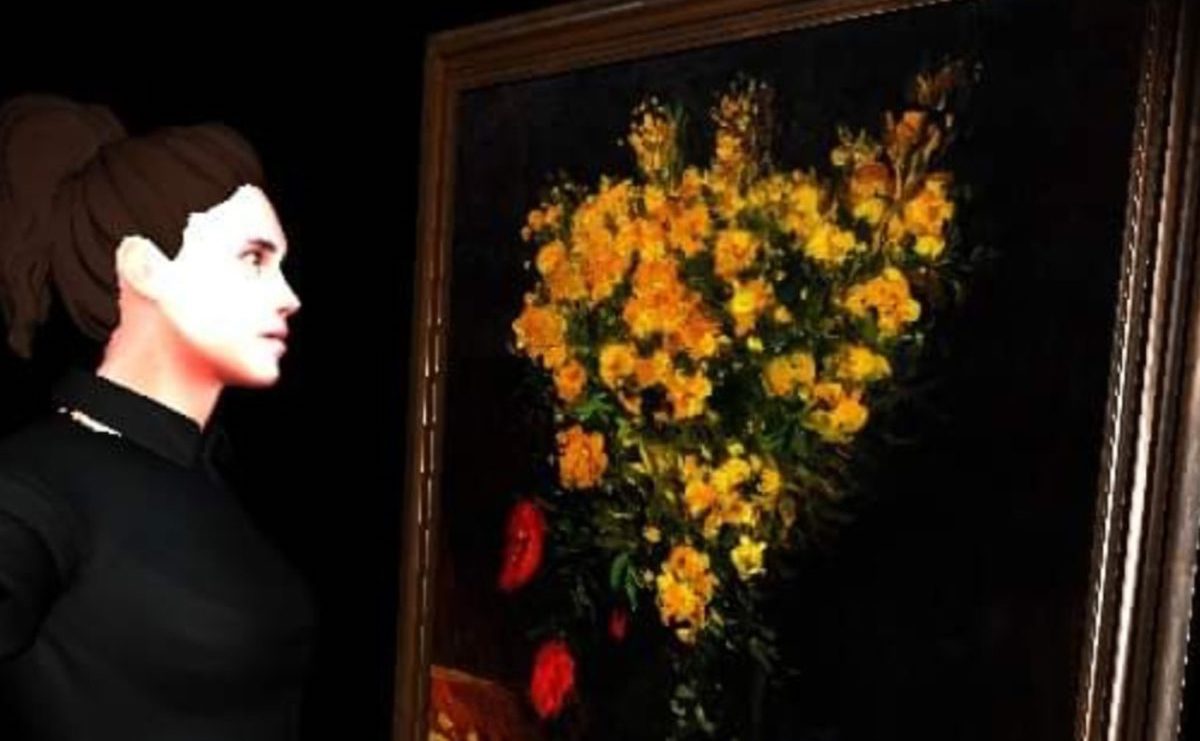
It’s mostly dark in the Stolen Art Gallery, with a night sky pierced by twin skylights that passively illuminate the room. You cannot see the walls, because there are no walls. You cannot see your feet, because you have no feet. All you can see, aside from an orientation platform in the middle of the gallery, is a semicircle of five paintings floating in black space. They aren’t there either, of course. They were all stolen decades ago.
Reconnecting with these lost works is the premise of Stolen Art Gallery, an immersive virtual reality (VR) experience built by UOL compass and is accessed through the MetaQuest 2 headset. While the company bills itself as the first museum in the metaverse, it’s actually not even the first virtual museum. stolen art gallery – but it’s certainly a refinement of previous iterations of the idea, and perhaps the first to allow users to gather in meta-space while viewing stolen artworks long out of public view.
The gallery features Caravaggio’s “Nativity with Saint Francis and Saint Lawrence” (1609), stolen from an oratory in Sicily in 1969; Rembrandt’s only seascape, “Christ in the Storm on the Sea of Galilee” (1633); and “Chez Tortoni” (c. 1875) by Édouard Manet, both taken from the Gardner Museum in Boston in 1990 at one of the most notorious art thefts in modern history. There is also the “View of Auvers-sur-Oise” by Cézanne (1879-1880), stolen from the Ashmolean Museum in Oxford; finally, there is Vincent van Gogh’s “Poppy Flowers” (1887), stolen in 1977 from the Mohamed Mahmoud Khalil Museum in Cairo, recovered in Kuwait a decade later, and then stolen again in 2010.
“We chose five relevant art masterpieces by famous painters that had long been out of popular reach,” Compass UOL CEO Alexis Rockenbach said in an email interview. The team hopes to add other works to the gallery, as well as interactive features that can take users to “ever more realistic levels of the immersive experience of people within a metaverse.”
Here are things you can do in the Stolen Art Gallery: customize your avatar; navigate directly to a painting and paste your face into it (or through it!); summon and dismiss detailed tagging information without leaning over a small wall poster; listen to audio overlaid directly into your brain via mysterious Oculus technology, which puts you on a ship at sea or in a busy cafe, depending on what you’re watching; use a variety of handy pens to write messages in the air or temporarily deface paintings; send little streams of approving emoji out of your tool clock and into the air (presumably to attract other gallery visitors, of which there were none during the times I visited), and use a selfie stick to snap photos.




Here are things you can’t do at the Stolen Art Gallery: get acquainted with the quality of painting on canvas; listening to hilarious exchanges between children dragged into the museum on a school field trip; take photographs other than selfies; take notes that exist outside of the app; and appreciate brushstroke details. The VR optics are amazing, and there’s an undeniable immersive quality to all experiences within that sphere (I’ve also toured a coral reef and danced with a robot in unrelated apps), but it doesn’t feel like a replacement activity for seeing a work of art in person, or even looking at a high-quality print reproduction. It is something peculiar, fun and interactive, but it is not the same.


“The artistic conception of the gallery was designed to give greater importance to the works of art than to the gallery itself, so the environment and lighting give focus and importance only to the pieces, not having other points of distraction,” he said. Rockenbach. “To represent the images of the works, we used photographs taken in high resolution so that the experience was as realistic as possible.”
This is perhaps due to the quality of the internet connection, so my virtual experience may have been less focused than it should have been, but I couldn’t get the level of detail that an in-person encounter, or even a high static. -quality image. What’s important here, though, is that you can’t see the artwork in person, so creating an immersive VR set is a pretty fun way to get a glimpse of long-lost masterpieces. It’s certainly no more or less of an outlet than any number of “immersive” exhibits that are popular at the moment and take advantage of light projections and audio accompaniment, although the price of a MetaQuest 2 is more prohibitive (when it’s not provided by the gallery, as it was in my case).


I was left with the feeling that the Stolen Art Gallery is not so much a vanguard for the museum of the future, but rather a showcase of ways to create dynamic shared experiences in virtual reality. And of course it has the distinct advantage of allowing an art writer to attend without having to wear pants, virtual or otherwise.







